
|
Saving Walt Disney’s Laugh-O-gram Studio Building in Kansas City |
||
|
|
|||
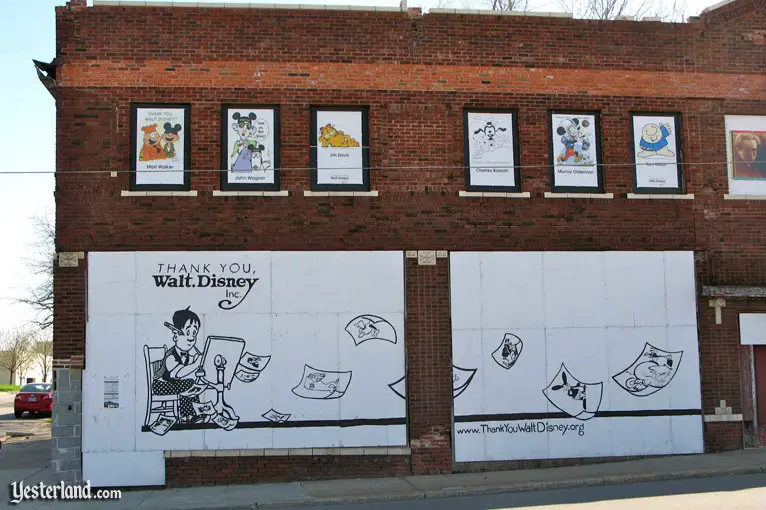
Photo by Werner Weiss, 2010 |
|||
|
It’s not the only old building with boarded-up windows in Kansas City, Missouri. But it’s the only one with drawings by major cartoonists and animators on the plywood. And it’s the only one that was the subject of a shareholder comment at the 2012 Annual Meeting of The Walt Disney Company.
|
|||
|
|
|||
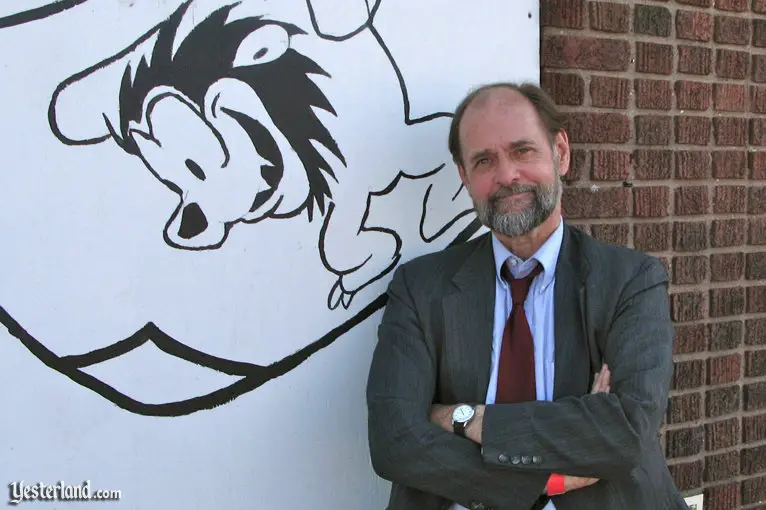
Photo by Werner Weiss, 2010 Dan Viets, President of Thank You Walt Disney, Inc. |
|||
|
I was at the 2012 Annual Meeting of The Walt Disney Company in Kansas City on March 13, 2012. During the question-and-answer period, I noticed that Dan Viets, President of a group called Thank You Walt Disney, was waiting at a microphone on the opposite side of the meeting room. Disney Chairman John Pepper said, “Number one, please,” and Viets made an eloquent statement about a brick building located about a mile from where the meeting was taking place: I’m Dan Viets, a shareholder from Columbia, Missouri. I want to compliment you on the wonderful job you’re doing of running this company and welcome you to Kansas City. While you’ve been building for the future of The Walt Disney Company, a group of us here have been working to save the history and heritage of the company, right here in Kansas City. The short film you showed earlier did an excellent job of outlining how The Walt Disney Company’s roots extend to right here in Missouri and particularly to the Laugh-O-gram Studio building here in Kansas City. We have been working with the help of Walt Disney’s daughter, Diane Disney Miller, who was with us last evening, to save that building. It would have been destroyed—undoubtedly, it would have been destroyed about decade ago if we hadn’t jumped in to save it from the wrecking ball. And with the help of Walt Disney’s daughter Diane and her family, we’ve succeeded in saving and stabilizing that building. It’s no longer on the dangerous buildings list. We think it has the potential to be an educational center—a museum, perhaps—that would tell the amazing story of Walt Disney’s life and work. We have often gone to corporate citizens here in the Kansas City area asking for their help, and often we get the question, “Why isn’t The Walt Disney Company part of this?” And I just want to say that we invite you to partner with us in this project and we would welcome any input you may have for us. Loud applause erupted from the audience for Viets’ statement. |
|||
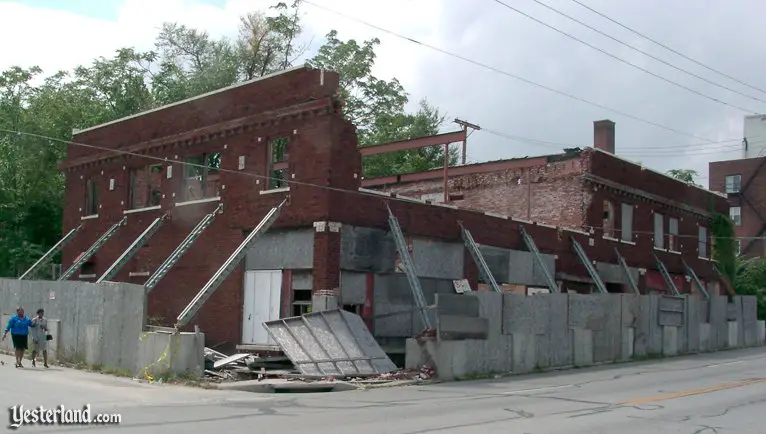
Photo from Wikipedia under Creative Commons Attribution Building in 2004 |
|||
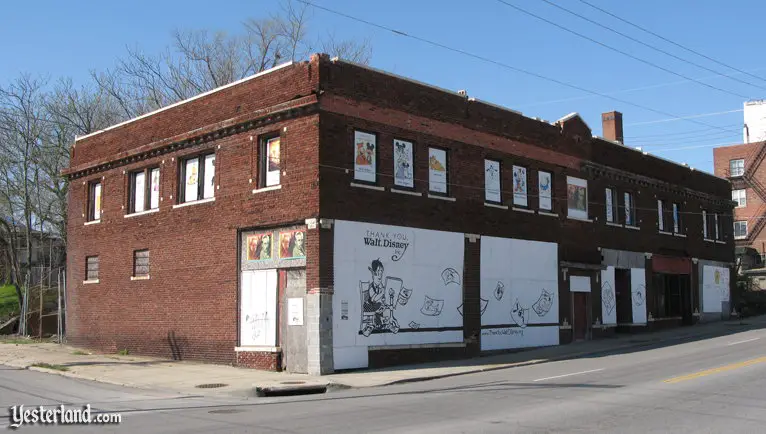
Photo by Werner Weiss, 2010 Building in 2010 |
|||
|
Disney CEO Robert Iger responded: Dan, thank you very much. I’m familiar with the building. I did not know of your efforts until we arrived here yesterday. We have a gentleman with us named Steven Clark, who works very, very hard at preserving the great legacy of this company and of its founders. And I know Steven may have spoken with you already. He’s the person for you to make a proposal to, and we’ll take a serious look at it. Later that day, I drove over to the building to take a look. Not much had changed since two years earlier when Dan Viets first showed the building to me. (That was when I took most of the photos in this article.) A few more bricks seemed to be missing, but the building was still standing. I had to wonder... Would the next step for the building be the full restoration that it deserves? Or would the building eventually join the list of historical treasures that have been lost forever? The building was originally called the McConahy Building and later became the Carroll Building. In this article, I’m going to call it the Laugh-O-gram Building. Although that was never its official name, it’s the most meaningful name for it today. |
|||
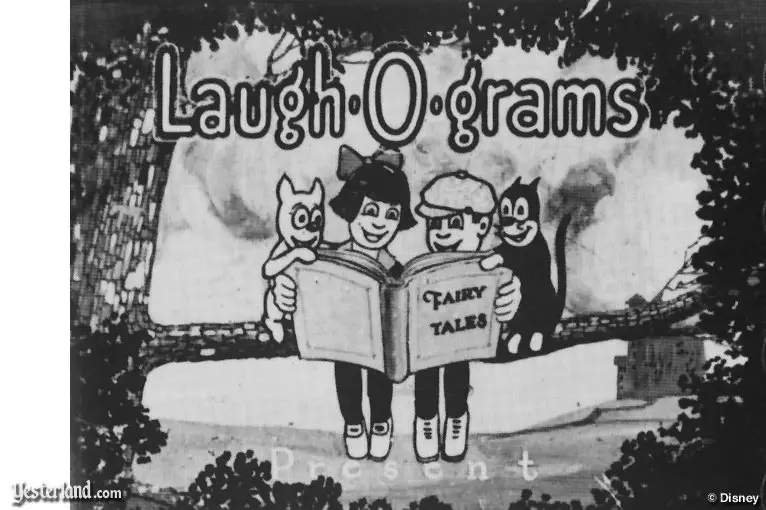
© Disney Enterprises Laugh-O-grams title frame |
|||
|
There’s a good reason why there are people so committed to saving the Laugh-O-gram Building. It was 1922 when 20-year-old artist and entrepreneur Walt Disney incorporated his own cartoon studio, Laugh-O-gram Films, and left his job at the Kansas City Film Ad Company. Using money from investors, Walt rented an office suite on the second floor of the then-new building at 1127 E. 31st Street in Kansas City. Walt and his young crew made inventive cartoons, including several fairy tales such as Cinderella and his first Alice comedy, Alice’s Wonderland. In July 1923, the business declared bankruptcy. Walt boarded the Santa Fe California Limited with a cardboard suitcase to see if he could be successful in Hollywood. Despite the short life of the Laugh-O-gram Films business, it was the foundation of Walt Disney’s remarkable career, of Walt Disney Productions, and even of The Walt Disney Company of today. It can easily be argued that the Laugh-O-gram Building represents the genesis of Hollywood animation. Walt’s employees included Rudolf “Rudy” Ising and Hugh Harman, the team that founded the animation divisions of Warner Bros. and MGM. Ub Iwerks—whose career later included designing and animating Mickey Mouse and developing the multiplane camera—was Walt’s chief animator in Kansas City. Friz Freleng worked with the Laugh-O-gram artists at the Kansas City Film Ad Company, and eventually followed Walt Disney to California to become a legendary Warner Bros. director and the co-founder of DePatie-Freleng. |
|||
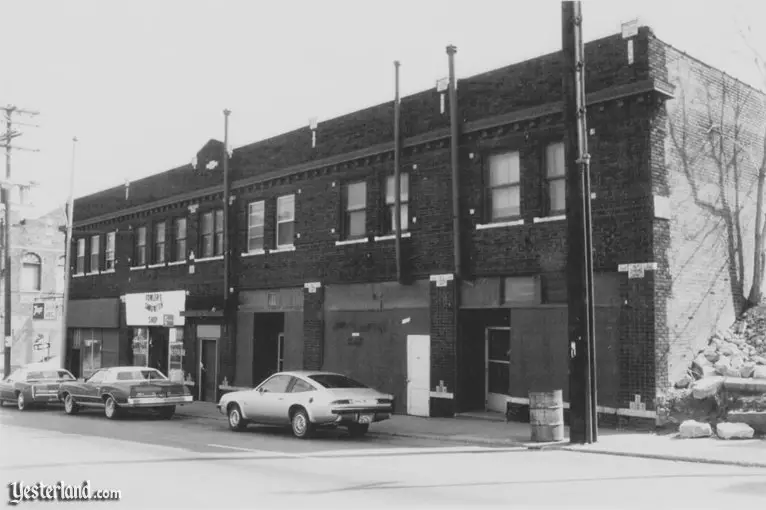
Photo by Victoria C. Karel, 1977, for the Landmarks Commission of Kansas City Looking across 31st Street in 1977 (from National Register of Historic Places nomination document) |
|||
|
While the artists went on to greatness, the Laugh-O-gram Building had a less illustrious fate. For more than a half century, retail tenants came and went in the five storefronts on the ground floor, and office tenants moved in and out upstairs. In 1977, the building was nominated for the National Register of Historic Places. The nomination form indicated that only a single storefront remained as an “operating commercial enterprise.” Despite the high vacancy factor, the form indicated that “the entire commercial building and south, rear wing remains in good condition and receives regular maintenance.” |
|||
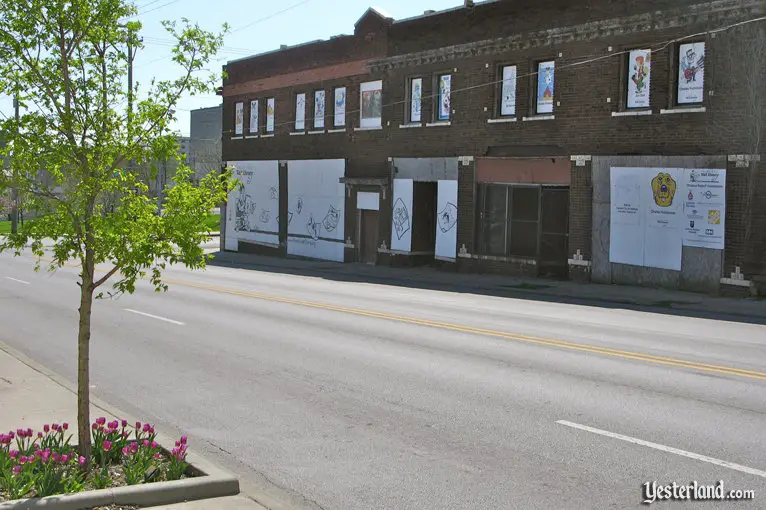
Photo by Werner Weiss, 2010 Looking across 31st Street in 2010 |
|||
|
In 1978, the building was officially listed on the National Register of Historic Places. But that didn’t help the building. By the late 1970s, no tenants remained. Over the next two decades, the property owners failed to perform necessary maintenance on the empty building. The harsh Midwestern winters took their toll. The neighborhood had changed too. As the book Walt Disney’s Missouri (Kansas City Star Books, 2002) explains, “The neighborhood around the building deteriorated and struggled with poverty and crime.” |
|||
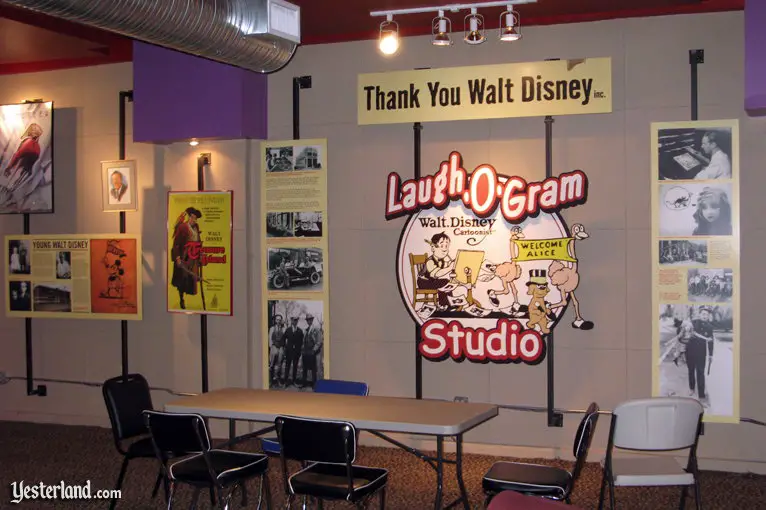
Photo by Werner Weiss, 2010 Temporary exhibit (2010) at the Screenland Theater |
|||
|
Recognizing the significance of the building, a group of Missouri citizens formed Thank You Walt Disney, Inc. in 1996 to acquire and save the Laugh-O-gram Building. They bought the crumbling building. They convinced the city not to demolish it. They worked with Diane Disney Miller and her family to raise the funds to repair the major structural damage. In 2007, the group rebuilt the collapsed portion of the building using the existing bricks, built a new roof, added a concrete slab floor, and made it a sound structure. |
|||
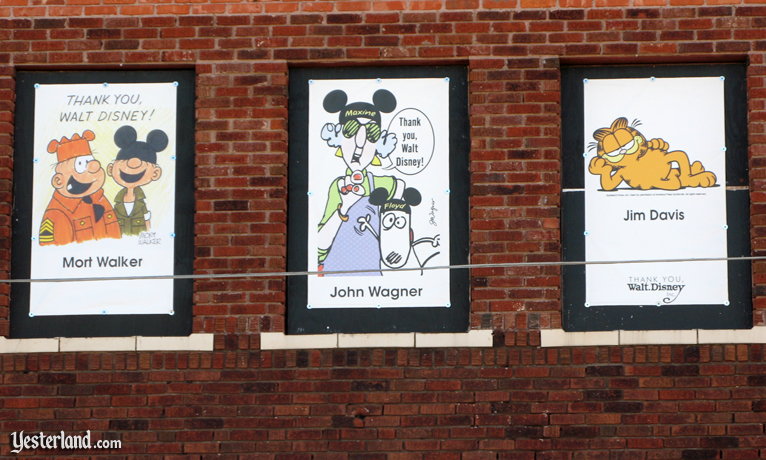
Photo by Werner Weiss, 2010 Examples of a few of the cartoonists’ window covers |
|||
|
In 2009, prominent cartoonists and animators lent their support by creating artwork to cover the boarded-up windows. There’s a lot to be done to fully restore the architectural features and to build out the interior, but the stage has been set. |
|||
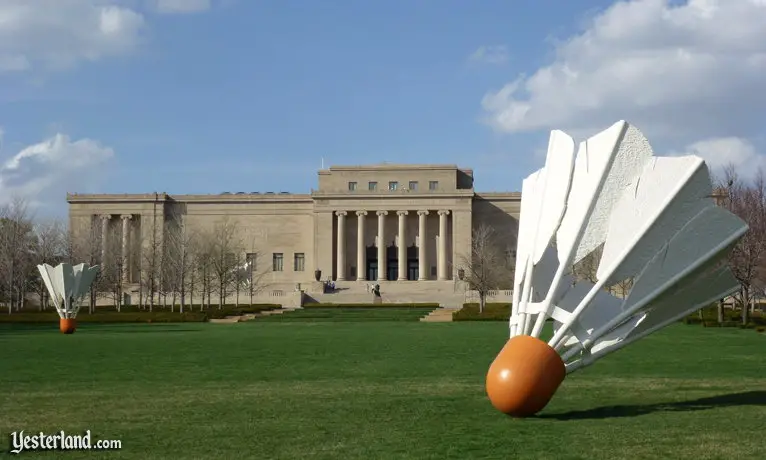
Photo by Werner Weiss, 2012 Nelson-Atkins Museum in Kansas City |
|||
|
Kansas City is already a great museum city, with the National World War I Museum, the Nelson-Atkins Museum of Art, and the Harry S. Truman Library & Museum in nearby Independence, among others. A beautifully restored historic site that celebrates early animation and the remarkable entrepreneurship of young Walt Disney would be a welcome addition. |
|||
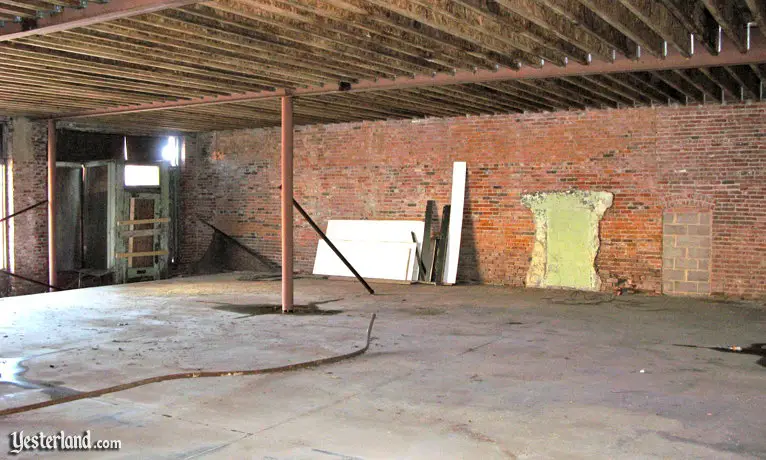
Photo by Werner Weiss, 2010 Ground floor interior of the Laugh-O-gram Building |
|||
|
There’s plenty of space in the building—two floors with a total of approximately 16,720 square feet, according to the National Register of Historic Places nomination form. The Thank You Walt Disney organization has plans for how this space might be used. On the first floor, the museum would have permanent exhibits about Walt Disney’s Kansas City years, animation, and related subjects. The organization has already acquired some artifacts for such exhibits. There would also be space for temporary exhibits, such as private collections of Disneyana. A screening room would show the surviving Laugh-O-gram cartoons and other early animation. On the second floor, the highlight would be a faithful reconstruction of the Laugh-O-gram studio space. Because the studios only occupied one five-room office suite, the second floor would also be used for classrooms and animation labs. It’s a promising concept. Local school children and visiting families could learn about the early days of animation and try their own hand at animation (with digital cameras for instant playback of the children’s efforts). |
|||
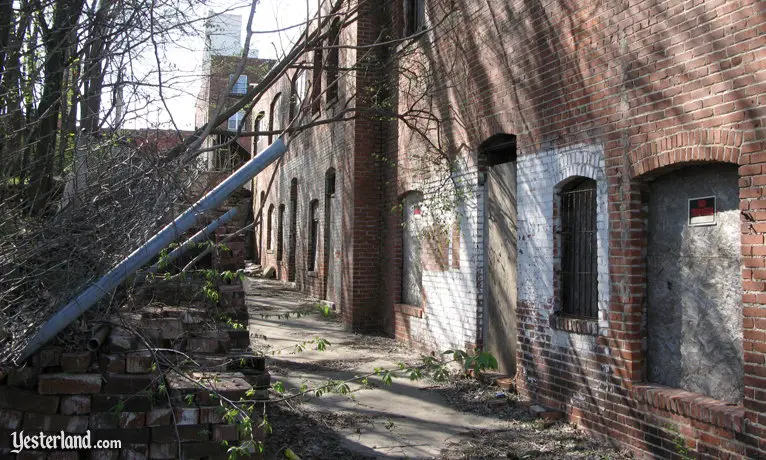
Photo by Werner Weiss, 2010 Back of the Laugh-O-gram Building |
|||
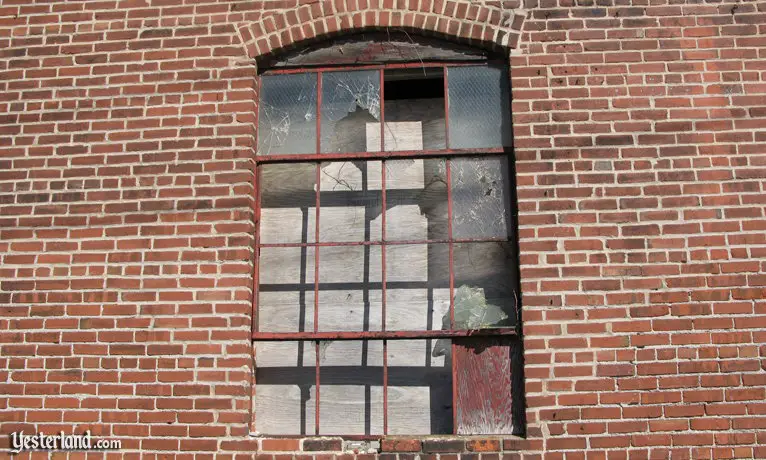
Photo by Werner Weiss, 2010 A west-facing window of the Laugh-O-gram Building |
|||
|
In a city like Kansas City, the full restoration and museum would need to be done very well to meet the expectations of visitors—and that takes a lot of money. According the New York Times (“Exploring the Man Behind the Animation,” September 30, 2009), the Walt Disney Family Museum in San Francisco cost $110 million. Even if the transformation of the Laugh-O-gram Building could be done for a fraction of that amount, it will still be an expensive undertaking. |
|||
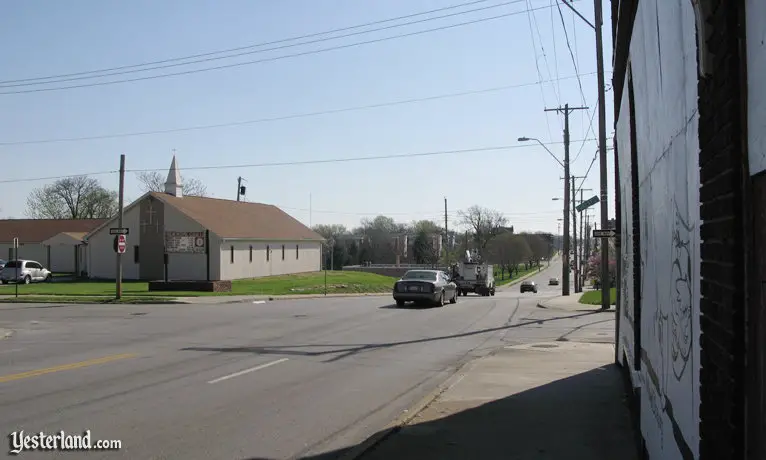
Photo by Werner Weiss, 2010 The intersection of 31st Street and Forest Avenue |
|||
|
Then there’s the issue of the neighborhood where the Laugh-O-gram Building is located. The neighborhood has seen better days, but it doesn’t feel bad (to me) around there. Directly north of the building, the large, well-maintained Operation Breakthrough facility helps children who live in poverty. Across the street to the east, a city-owned parcel has grass, trees, and a police station. A church is diagonally across the street. There are structures in the neighborhood with wonderful industrial, commercial, and residential architecture crying out for restoration. My guess is that the neighborhood will get better, not worse, over time, and that the restoration of the Laugh-O-gram Building would be a catalyst for improvement. |
|||
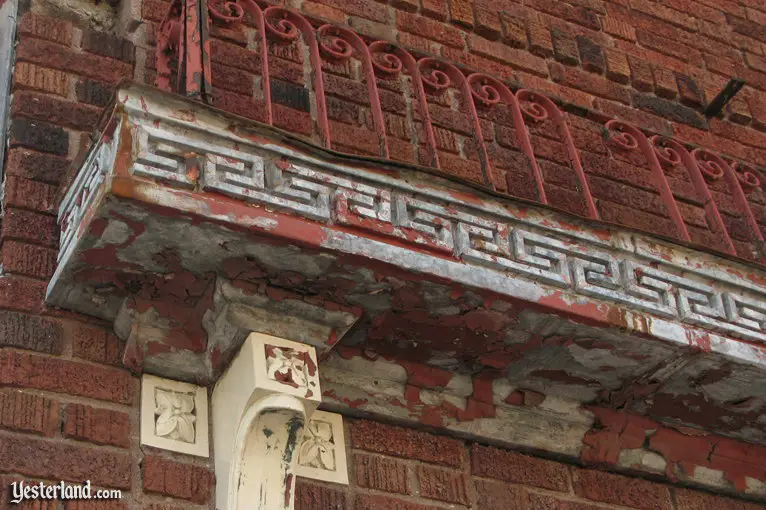
Photo by Werner Weiss, 2010 Architectural features of the Laugh-O-gram Building in need of restoration |
|||
|
The location is not far from Kansas City’s Main Street tourist corridor, which connects downtown, Crown Center, the city’s top museums, and tony Country Club Plaza. The National World War I Museum, the museums of Union Station, the shops of Crown Center, and the Hallmark Visitors Center are just a mile away. A Marriott Residence Inn and a Marriott Fairfield Inn, both of which look nicer than the usual branches of these hotel chains, are a mile to the west. A nearby Costco and Home Depot appear to be doing well. Someone suggested to me that the best solution for the Laugh-O-gram Building might be to disassemble it and rebuild it as part of Greenfield Village at The Henry Ford in Dearborn, Michigan, where it could join numerous other historic structures which have been moved there. Although a Laugh-O-gram Building solution involving Greenfield Village may seem like a good idea, it would be a shame for the building to be removed from the context in Kansas City. |
|||
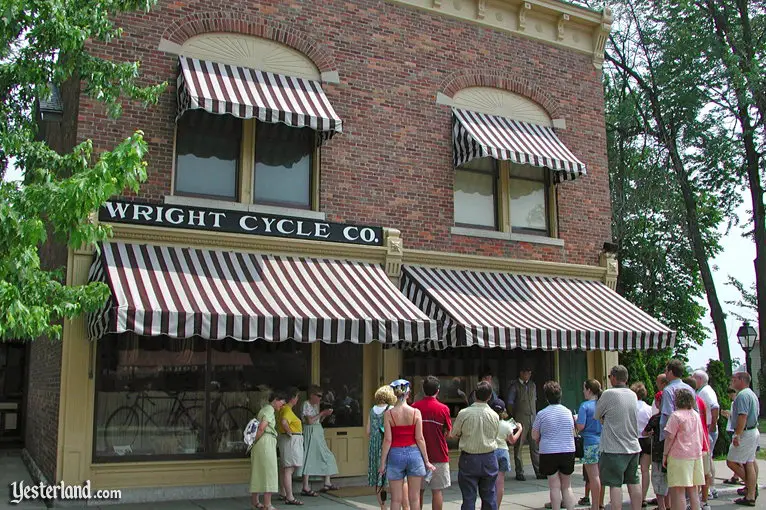
Photo by Werner Weiss, 2002 Wright Cycle Co. at Greenfield Village in Michigan (2002 photo) |
|||
|
Consider the Wright Cycle Company—where the first airplane was developed—and the Wright Brothers’ home. Henry Ford moved them from Dayton, Ohio to Greenfield Village where they no longer provide the experience of being in the actual place where history was made. Although Greenfield Village is worth visting, the historic buildings there are reduced to being artifacts in a history theme park. The Dayton neighborhood from which Henry Ford removed the structures is now the Aviation Heritage National Historical Park—without the original structures. The Laugh-O-gram Museum and Educational Center (or whatever it’s eventually called) would be a tremendous asset for Kansas City, and especially for the Midtown neighborhood where the building is located. It would serve residents and visitors. As with other non-profit museums, it will take generous private and corporate support to make it happen. The donors will benefit from the goodwill that comes from being associated with such an endeavor. Thank you to Thank You Walt Disney. Thank you to the Walt and Lilly Disney Foundation. And thank you to the future donors who will, I hope, make this dream into a reality. |
|||
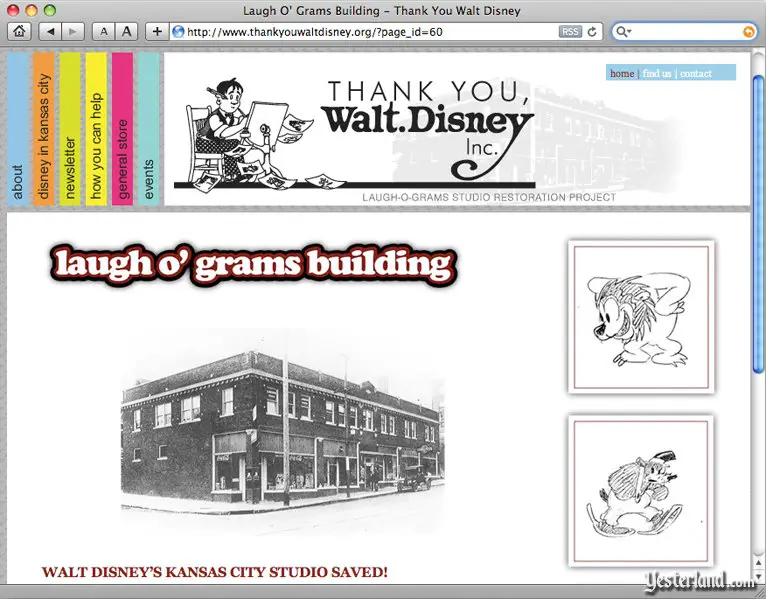
© Thank You Walt Disney Inc. Thank You Walt Disney Inc. website |
|||
|
According to Dan Viets, “We have never been more excited about the possibilities of working with The Walt Disney Company and Walt Disney’s family to make this dream a reality.” To learn more about Thank You Walt Disney—including events, membership, merchandise, opportunities to volunteer, the Laugh-O-gram Building, and how to contact the organization—visit ThankYouWaltDisney.org. |
|||
© 2012-2021 Werner Weiss — Disclaimers, Copyright, and Trademarks Updated December 29, 2021 |
|||